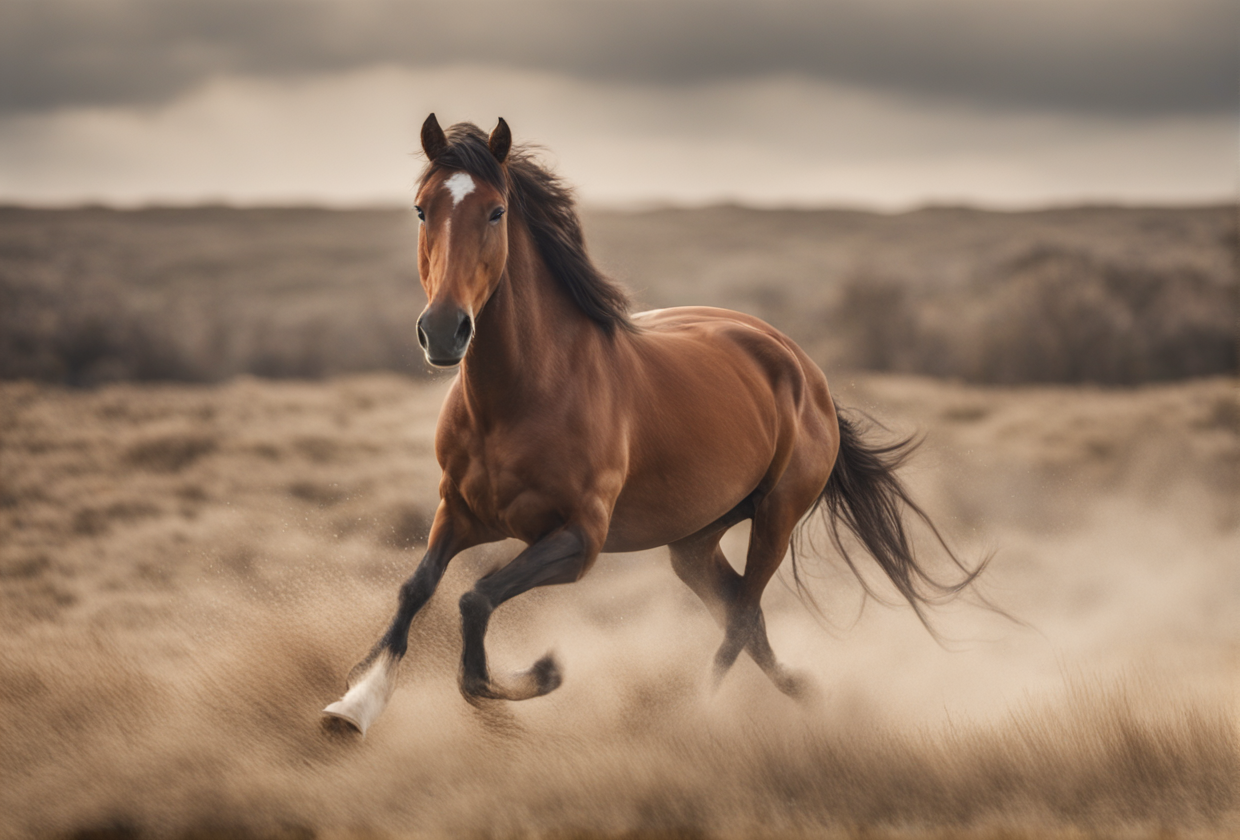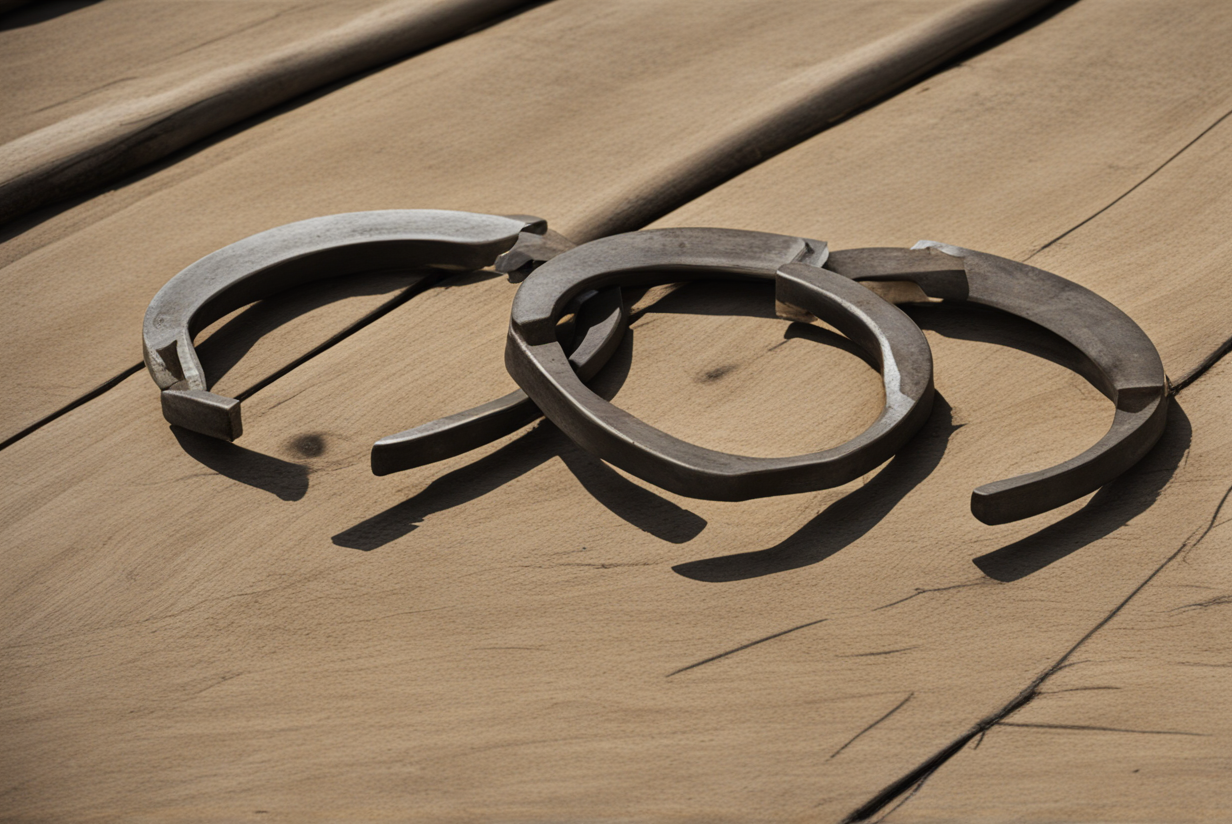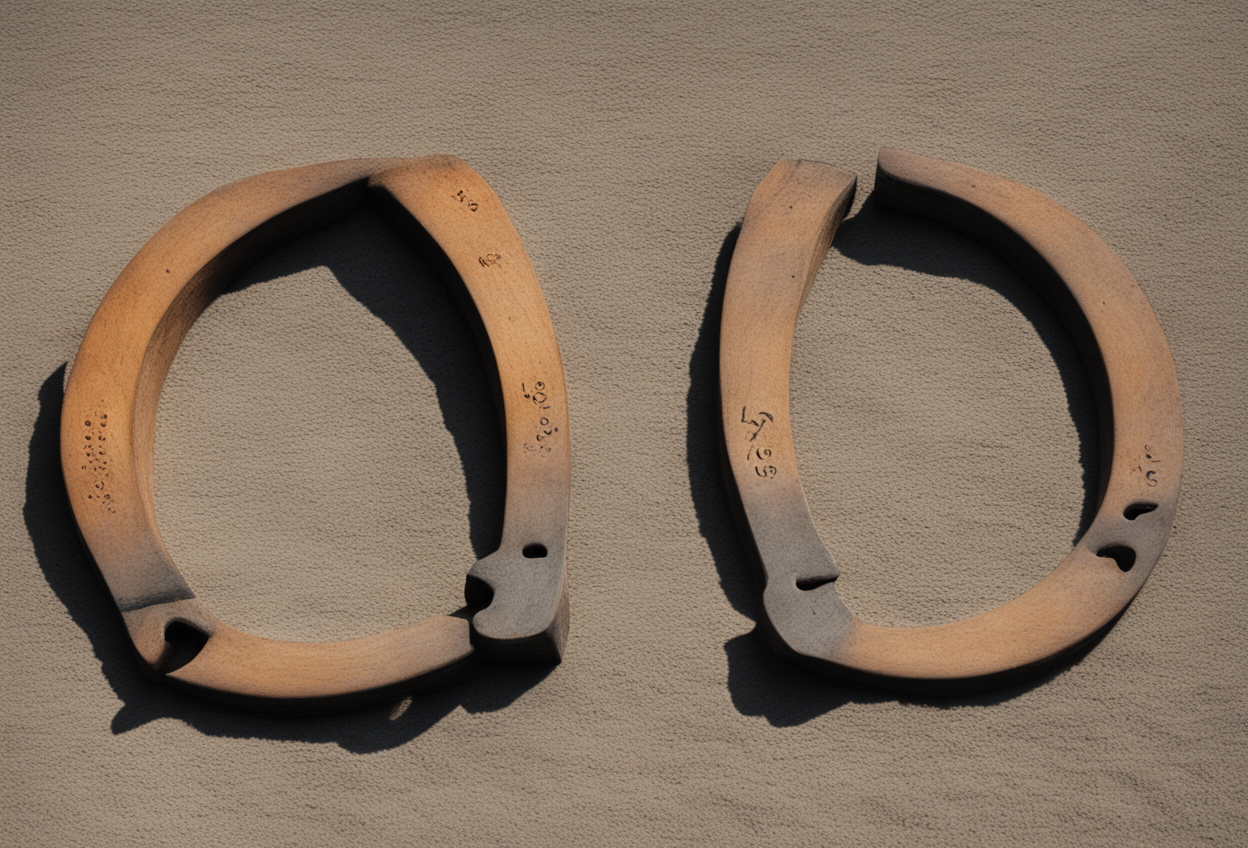As an avid equestrian, I remember the first time I took my new horse Rocky out for a ride in the countryside.
About halfway through the trail, I noticed he was favoring his front left hoof and limping a bit.
When I took a closer look, I saw some uneven wear on his shoe that was probably causing him discomfort.
Proper shoeing is so important for a horse’s well-being and ability to perform without pain or risk of injury.
You ain’t just puttin’ some metal on their feet – it makes a big difference in supporting their whole leg structure.
But did you ever wonder exactly how? Then keep readin’ partner, I’m gonna school you on why shoeing matters.
Table of Contents
Horse Hoof Anatomy Needs Top Protection

A horse’s hoof ain’t like our feet, all tough skin and padding. Their hoof wall is more like fingernails – thin and hard.
Under that is soft tissue just like what’s under our toenails. Now imagine runnin’ around all day with no shoes! That soft stuff inside would get beat to smithereens.
The hoof has blood vessels and nerves like we got too. It also has a sole and frog – that’s kinda like the bottom pad of your foot.
All that delicate tissue underneath relies on the hoof wall stayin’ solid and strong as a barrier. Otherwise a horse could end up with cuts, corns or other painful injuries inside their hooves real easy.
Farriers know just how easily a hoof can get bruised or even cracked from kickin’ rocks or poundin’ hard ground. Shoes put steel between all that sensitive biological material and whatever harsh stuff a horse steps on. Talk about hoof protection – it don’t get much better than a good shoe job!
Imagine your horse is out plowin’ muddy fields all day without shoes. That soft soul underneath would get packed full of muck, rocks and who knows what else. It’d be the equivalent of tryin’ to walk around all day with wet bog mud crammed into your bare feet. No thanks!
A properly shod hoof just works better as a unit. All the layers inside line up how they should instead of gettin’ pinched or bruised. Shoes distribute a horse’s weight the right way too, reducin’ strain on the whole leg as they roll along. Good traction is key for stayin’ sound.
Shoes Provide Support and Traction

Just like I mentioned, shoes give your horse the grip they need to really motor without slippin’ all over. Especially if you ride trails with loose gravel, dirt or sandy areas – shoes with some tread make all the difference.
Imagine trying to gallop through deep mud or up a steep, slippery hill without any studs orBorings in your shoes. You’d be sliding around like Bambi on ice! No thanks, I’ll keep all four feet pointed straight, if you don’t mind.
Shoes don’t just protect the bottom – they support the whole leg above too. The added rim of steel acts kinda like the sole in your boot, cushionin’ each step. Think of all that impact absorbed with every stride instead of jarrin’ up the leg joints. Ouch!
Any farrier will tell you how shoes can also help correct imbalance issues. Maybe one foot lands out a little funny and needs a special trim or wedge to fix it. Shoes give farriers way more control to adjust a horse’s stance compared to leaving them barefoot.
Certain horses like ranch horses or barrel racers need maximum traction for quick turns at high speed. You don’t want to be skidding all over in the middle of a competition run! Sports shoes with aggressive traction keep all four feet rooted for better performance.
Help Manage and Correct Hoof Issues

Just like a doctor uses casts or braces, farriers can craft custom shoes to help horses through injuries, imbalances or rehabilitation. Some examples include thermoplastic shoes that mold to the hoof, heart bars added for extra support in weakened areas, or shoes with built-in wedge pads.
Shoes are invaluable for managing chronic conditions too. Maybe your horse has contracted heels or a bad case of thrush that needs extra protection. Therapeutic shoes offer relief while the underlying issue improves at its own pace without ongoing pain.
Corrective shoeing is a whole art – I’ve seen shoes tilted every which way you can imagine to realign crooked legs gradually over time. Special orthopedic shoes even feature pivots and levers for conditions like navicular disease. Shoes give farriers tools to treat problems you can’t see from the outside.
Part of routine farrier care includes rasping the outer hoof wall every 4-6 weeks as it grows down. This maintains the proper oval shape and alignment, draining water shed from the hoof capsule. Neglect that routine and your horse’s hooves could grow outward unevenly or at funny angles, leading to issues down the line.
Extend the Lifetime of Your Horse’s Feet
A horse’s natural hoof material grows about 1/4 inch per month, so a good farrier trims it back regularly like getting a haircut. Just like how our fingernails keep growing, hooves do too if left untrimmed.
Untrimmed, unattended hooves can overgrow and distort their shape within months. Then you got a horse who may struggle to walk sound or even become lame as things shift out of whack. Not a pretty picture, let me tell ya!
Proper shoeing stretches out how long a horse’s natural hoof capsules last before replacement becomes necessary. Farriers carefully level and shape worn areas while retaining as much healthy hoof material as possible each reset.
Good shoes preserve that expensive natural hoof stock by functioning as an extra layer of highly durable protection. Compare shod feet that stay fresh for months versus bare feet wearing down to the quick within weeks – makes good financial sense too if you do the math!
Keeping on a regular trimming and shoeing schedule ensures your horse’s hooves stay healthy, balanced and functioning as the strong foundation they were designed to be. That translates to longevity in your horse’s working career with sound feet they can depend on.
In conclusion, regular professional shoeing by a qualified farrier is non-negotiable for any horse’s wellbeing. Their feet are too valuable an asset to neglect, so find a good smith and treat ’em right!
Fun fact: A champion racehorse may have four new custom shoes applied every 5 days of hard training to keep their feet in tip-top shape for racing! Now that’s dedication.
Different Shoe Types for Various Needs
Farriers have a whole toolbox of specialized shoe types to suit different requirements.
For example, plain steel shoes provide basic protection without extras.
Keg shoes feature a narrow heel for enhanced breakover if a horse is base-narrow.
Bar shoes add a supportive heart bar along the back of the hoof for extra stability.
Eggbar shoes resemble a closed oval for maximum support of a founder-prone foot.
Aluminum shoes are lighter for competition horses prone to fatigue.
Hunter shoes have slick bottoms and short toes for improved traction in the show ring.
Shoe pads can be hot-fitted to shoes, made of various materials like borium, trail-grip, or silicone.
Therapeutic shoes come with special pads, wedges or pivots inserted for specific hoof corrections.
Horses in extremely wet climates may get caulked racing plates with extra-deep traction.
Track shoes for racing feature minimal nails and toe grabs for maximum speed.
Importance of Proper Fitting and Application
An ill-fitting or sloppily applied shoe can negate its protection and cause new issues.
The farrier must take accurate measurements and fit each shoe precisely to the hoof shape.
Shoe size, branches, and heel and toe placement all influence weight distribution.
Shoes need nailed on square and not crimped, to avoid distorting the hoof wall or capsule.
Correct nail size and placement prevents splitting or bruising the sensitive hoof wall.
Hoof rasping after shoeing maintains proper coffin bone and heel alignment.
Proper nailing sequence sets each nail before fully clenching to avoid fracture.
A balanced trim and thorough rasp evens out wear for natural hoof function.
Smooth, flat shoeing allows the foot to expand and contract without interference.
A farrier’s skill in shoe application directly affects how long a set stays on securely.
Signs It’s Time For a Reset
As shoes wear down, telltale clues indicate it’s time for a new set.
Loose, wobbly shoes no longer stay tight need immediate attention.
Worn, curled toes offer little protection and traction over hard surfaces.
Significant uneven wear shows a poor original fit requiring correction.
Cracks or splits developing in the hoof wall from ill-fitting shoes.
Heels wearing down faster than toes mean the trim is too short.
Excessive hoof growth makes shoes pinch or distort the soft tissues.
Persistent sole bruising under shoes signals an adjustment is needed.
Balled up mud and debris packed tightly under shoes over time.
Poor performance or intermittent lameness could result from long-overdue shoeing.
Common Hoof Injuries Prevented by Shoes
Loose, wobbly shoes are an accident waiting to happen on rough terrain.
Abrupt stops can jam unprotected toes against rocks, causing bruises.
Thin hoof walls are prone to cracks or chips from hard, pebbly surfaces.
Slippery trails risk twists or sprains from unshod feet losing traction.
Running or galloping barefoot on hard tracks can stress navicular bones.
Founder-prone horses need shoes to prevent coffin bone trauma from concussion.
Overgrown, raggedy hooves impair biomechanics and invite tripping.
Muddy or swampy areas pack debris inside unprotected hoof capsules.
Constant sole bruising leads to abscesses or chronic laminitis without shoes.
Heavy horses like drafts need reinforcement to bear their big frames.
Common Lameness Issues Aided by Farriers
Many conditions respond favorably to corrective or therapeutic shoeing.
Navicular syndrome benefits from supportive shoeing and padded heels.
Contracted or underrun heels require padding to encourage proper breakover.
Thrush invades soft tissue if the hoof capsule isn’t functionally shod.
Founder indications emerge with careful shoeing’s redistributed weightbearing.
Sidebone, ringbone, osteoarthritis – shoes offload affected joints.
Rotational issues like unlevel pasterns yield to wedged or levered shoes.
Suspensory desmitis and bowed tendons find relief through orthopedic shoes.
Hoof cracks, quarter cracks, white line disease all heal better unagitated.
Pastern or foot injuries recover while still using shoes’ support and traction.
Common Foot Conformation Flaws Aided
Toed-out feet walk straighter with heel-supporting shoes and wedge pads.
Toed-in feet benefit from shoes tilting the opposite way to encourage tracking.
Long or short toes call for special trims and heeled shoes for biomechanics.
Swingy fetlocks need shoes distributing weight to relieve strain on ligaments.
Base-narrow feet function at their best within a correctly fitted shoe.
Splay feet profit from stability until muscle development improves posture.
Over at the feet gain proper breakover with heart bar or eggbar shoes.
Puffy, bulbous soles need firm, well-fitting shoes for anti-concussive effect.
Low or thin-soled hooves call for extra support along the deep flexure line.
Mismatched feet find balance through individualized farrier corrections.